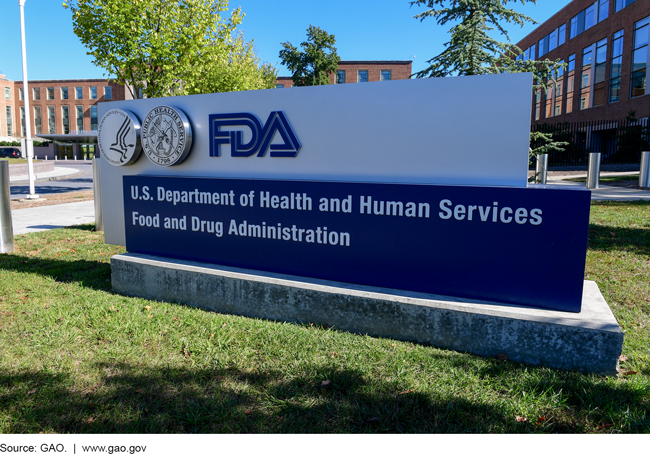
FDA Breakthrough Devices Program Update and Advantages
The FDA Breakthrough Devices Program provides several advantages for novel devices that meet the inclusion criteria and can significantly reduce a product’s time to market. The Breakthrough Devices program implemented by FDA in 2018 has superseded the Expedited Access program that was introduced in 2015. The program is gaining popularity with 11 designations in 2016, 19 in 2017, 55 in 2018 and 50 designations as of May 2020.
I have already written a blog on the Breakthrough Device program when FDA issued their draft guidance in October 2017. Now that the program has been around for several years and the guidance has been final since 2018, this blog looks to see what has changed and how the program is performing.
The original program principles remain the same in the final guidance with the addition of manufacturing considerations for premarket approval (PMA) application submissions. For submission types that typically require a preapproval inspection (i.e., PMA), FDA intends to expedite the review of manufacturing and quality systems compliance for devices in the Breakthrough Devices Program. FDA may accept less quality system and manufacturing information in a PMA if the sponsor satisfies the statutory and regulatory requirements using an alternative approach to submitting all of the items listed in FDA guidance, “Quality System Information for Certain Premarket Application Reviews.”
For example, this may occur when the sponsor has a good track record for quality systems compliance and there are no new manufacturing issues that could adversely impact product quality or performance. However, if your site has no prior inspection history, FDA would generally inspect the site before approval of the Breakthrough Device. Note that if your site has been inspected within the two-year period prior to the filing date of the PMA, with an inspectional outcome of ‘No Action Indicated’ or ‘Voluntary Action Indicated’ and for which the inspectional coverage is relevant to the PMA at issue, FDA may determine that it is appropriate to inspect those sites after approval of the Breakthrough Device.
Let’s also take another look at the program eligibility criteria as it was further clarified in the final guidance.
The guidance states that devices subject to PMAs, premarket notification (510(k)) or requests for De Novo designation are eligible for Breakthrough Device Designation if both of the following criteria are met:
- The device provides for more effective treatment or diagnosis of life-threatening or irreversibly debilitating human disease or conditions
- The device also meets at least one of the following:
- Represents Breakthrough Technology
- No Approved or Cleared Alternatives Exist
- Offers Significant Advantages over Existing Approved or Cleared Alternative
- Device Availability is in the Best Interest of Patients
When you submit a request for a Breakthrough Device Designation, the designation request should be your only request in the Q-Submission. If you have other requests for feedback pending, you may want to send the requests for feedback after FDA makes a designation decision as the designation may affect the feedback that FDA provides on your other requests. In addition, it is very important to include in your submission a clear justification of how the above program requirements are met. If FDA needs additional information to inform their decision, this will be requested within 30 days of receiving the designation request. The decision to grant or deny Breakthrough Device Designation is typically issued within 60 calendar days of receiving the request.
The program features outlined in the draft guidance remain the same in the final guidance and include Breakthrough Device sprint discussions, data development plans, clinical protocol agreements, and regular status updates with FDA.
Some of the benefits of the program include opportunities to interact with appropriate, specialized FDA review team members and senior management prior to submitting a device for FDA approval and receiving clear guidance on what is required for approval and how to meet these requirements. This process allows designing efficient and flexible clinical trials, and expedited review of manufacturing and quality systems compliance, when possible.
Another major benefit, in my opinion, is the intention of FDA to use timely post-market data collection for Breakthrough Designated Device subject to pre-market approval (PMA) when scientifically appropriate. Which means that a Breakthrough Designated Device may receive premarket approval without completion of a pivotal clinical trial. The device must still meet the statutory standard of reasonable assurance of safety and effectiveness at the time of approval
The program also presents some challenges with the time and resources required to engage with FDA frequently, and at a high-level of detail. Often companies are not prepared to offer the detailed information that FDA will request. A robust compliance program and data strategies that can stand up to FDA’s scrutiny early in the development process can be a challenge.
As I state in the beginning of this blog, the Breakthrough Designation provides several advantages for novel devices that meet the inclusion criteria and can significantly reduce a product’s time to market.
Image: https://www.gao.gov/products/gao-19-565
Virginia Anastassova, RAC, is the Regulatory Affairs Manager/ Senior QA Specialist at StarFish Medical. She brings extensive experience in quality management and regulatory affairs to our clients.
